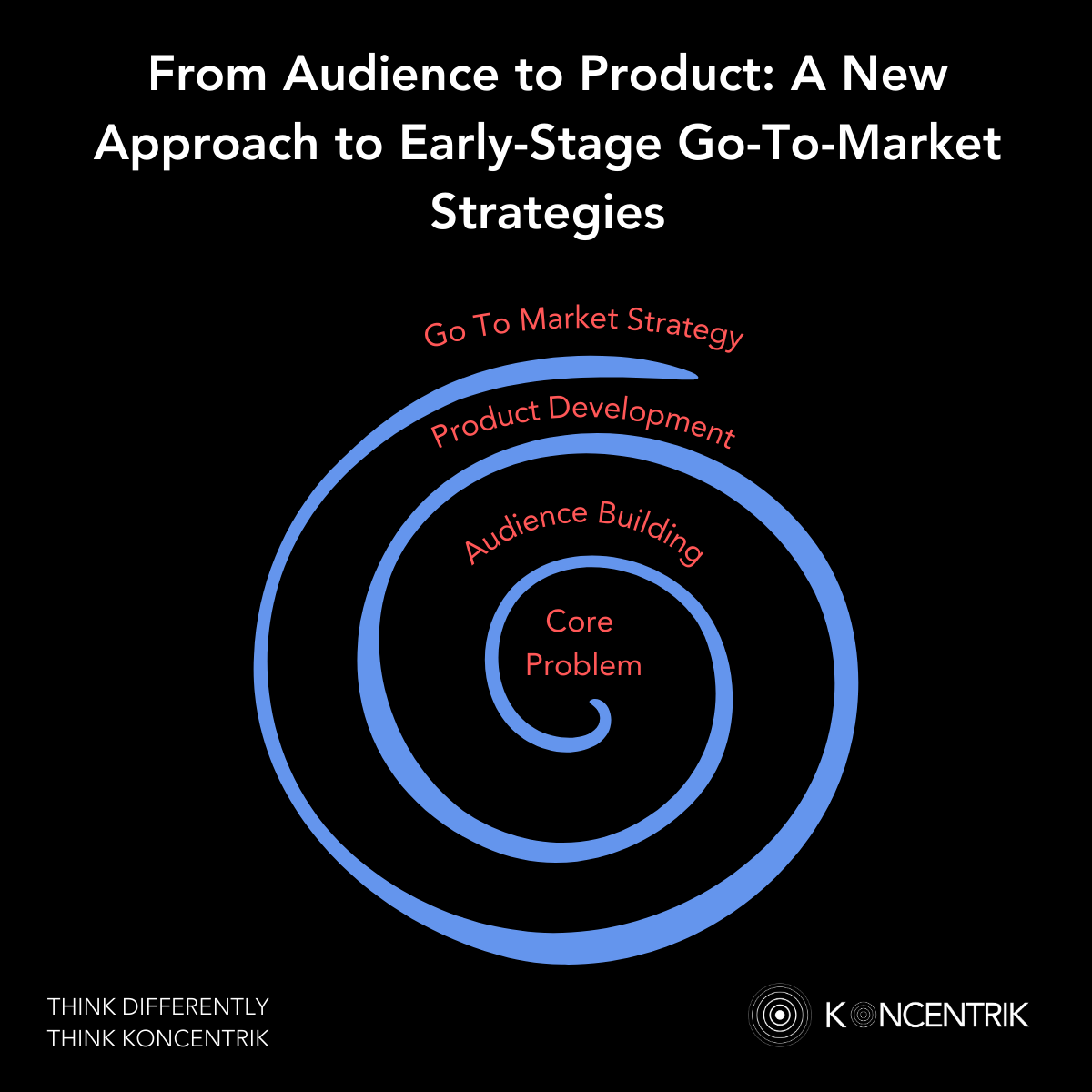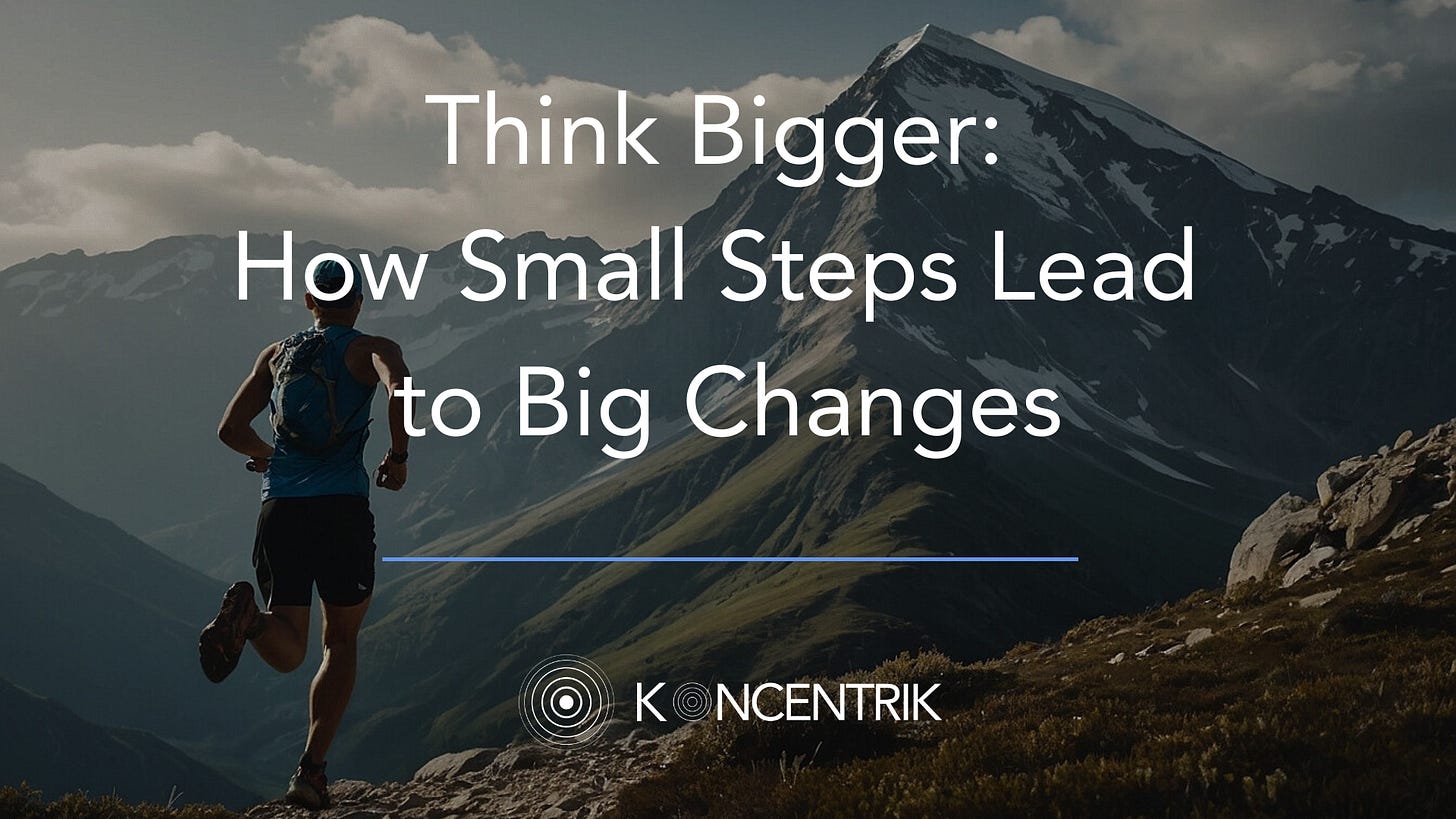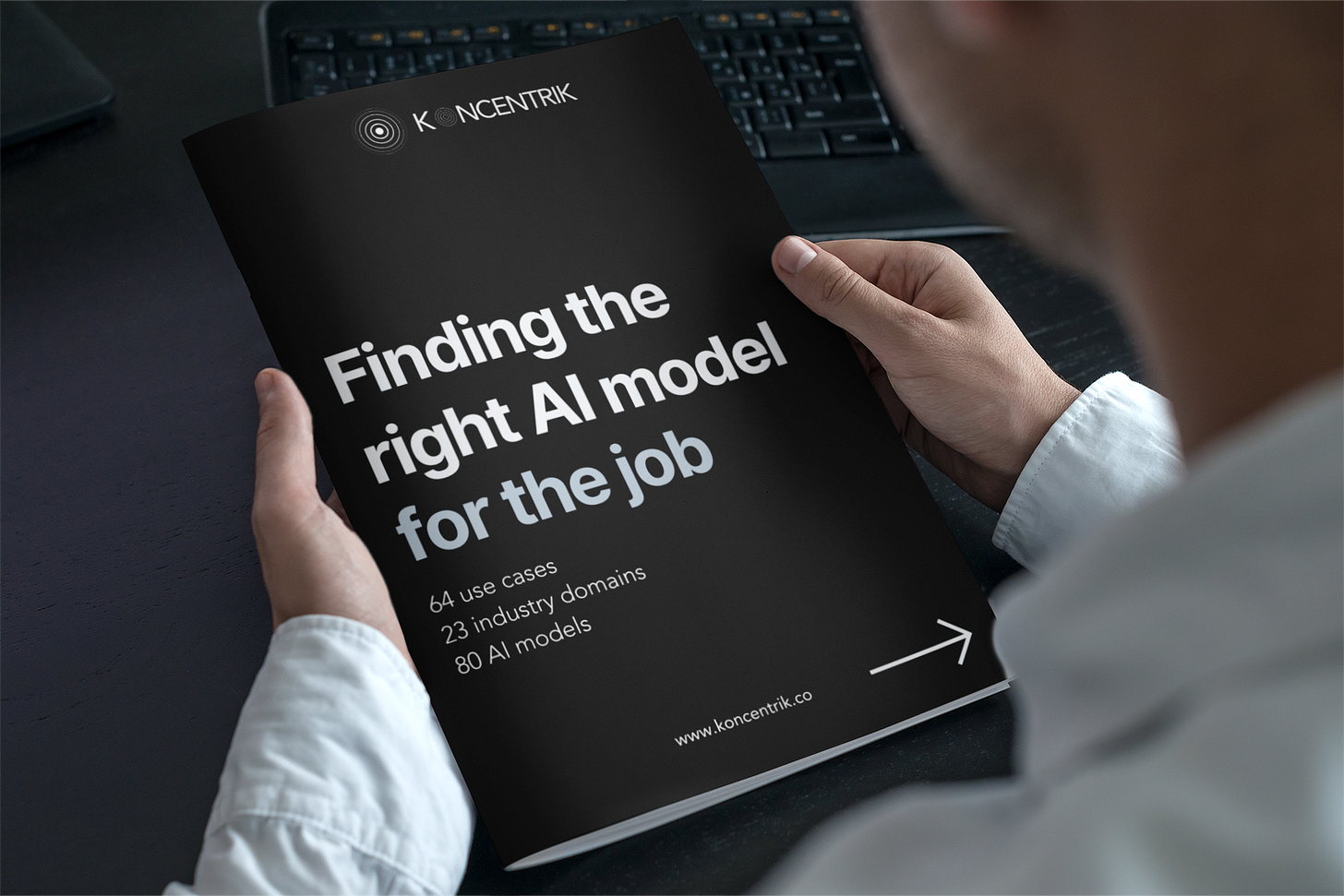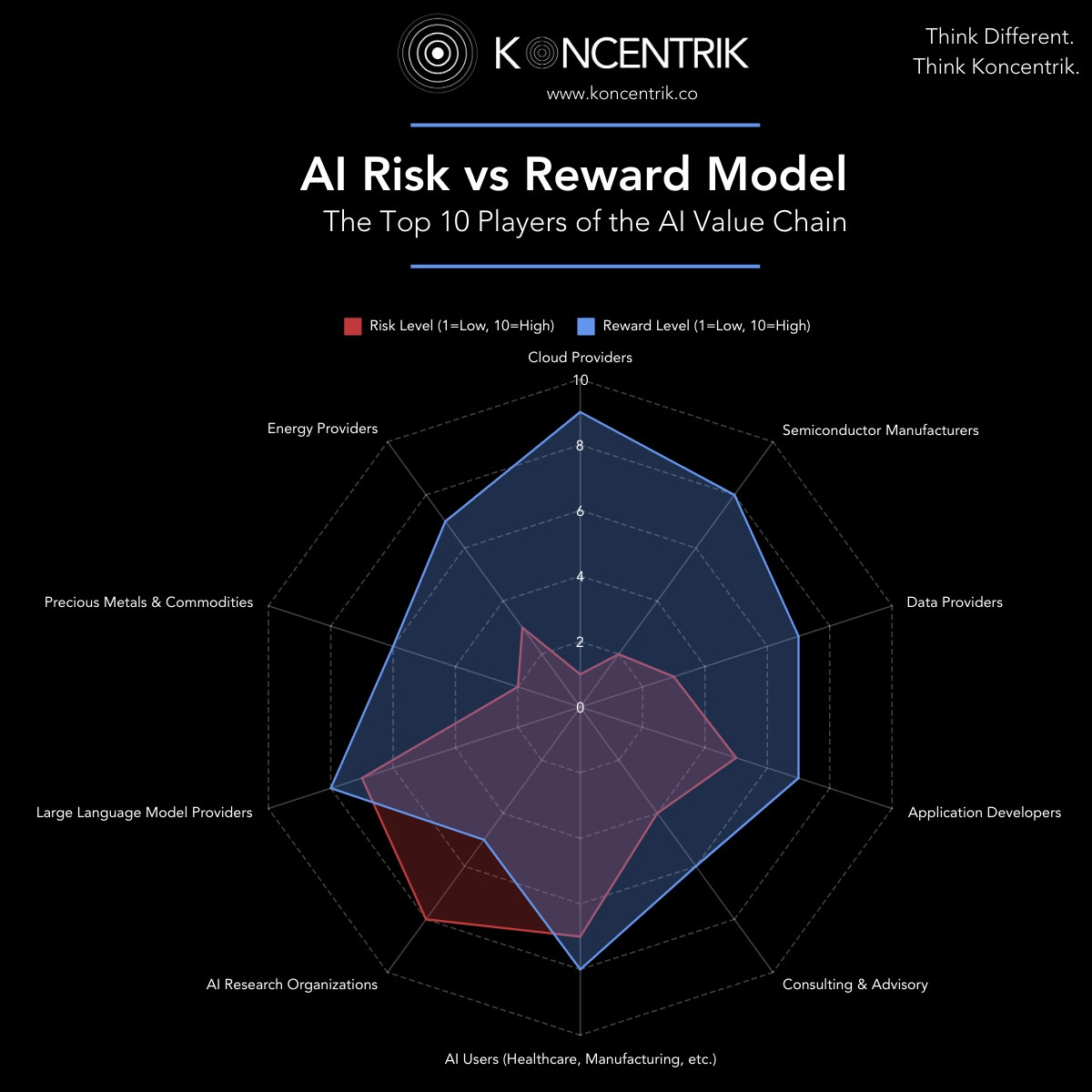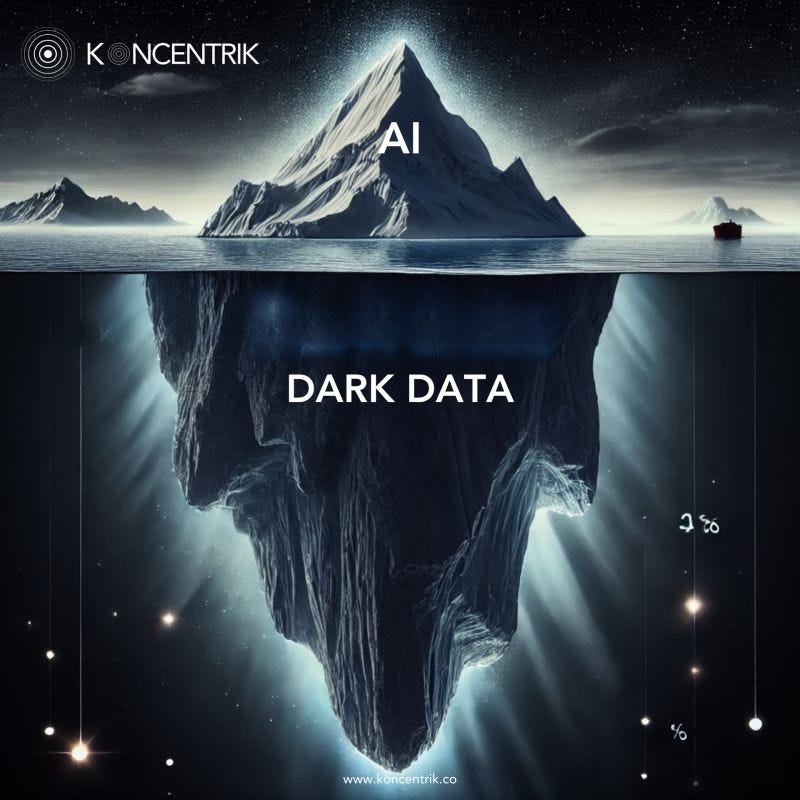2024 In Review: One Year Of Thinking KoncentriK
Reflections on a Year of Getting Things Moving: How One Small Step Leading to Big Changes.
Building the New, Creating Growth, And Making an Impact
When I step onto an escalator, I see many people just waiting as it carries them up or down. I don’t blame them: that’s what escalators are for, right? To take the work out of moving. But this passivity, while convenient, can make us complacent. Relying on “the system” to take us to the “right” place puts a lot of faith in “someone else”, does it not?
Earlier this year, I started KoncentriK so I could create, instead of just consume. To become an artisan of change rather than a witness. To try to have a say, rather than simply submit to the currents of change.
KoncentriK is about creating a small spark of change—a single drop of insight or action—that ripples outward, growing and expanding indefinitely, touching and transforming everything it encounters along the way.
It’s about taking a first step: the initial impulse made of the smallest quantity of energy to move into a new direction. And sometimes that’s all it takes: just one small step. As I said before: action trumps indecision! So just do it. Now!
By taking back some control, I feel I’m in the driver’s seat—and it’s exhilarating! Even if I don’t entirely know where I’m going yet, and I am thankful you are part of it!
By putting my learnings, questions, and doubts into words, I hoped not only to make sense of my reflections but also to inspire others to challenge, question, and view the world through a fresh lens.
But it’s not about change for the sake of change. It’s about seeing new ways to do old things, better ways to solve old problems.
I wanted to look at familiar problems with fresh eyes, to break habits and patterns, and to ask better, harder questions. It became a journey of infinite exploration: one question bringing a new one, forcing me to think a bit harder. It’s interesting writing these down in words help make things clearer and opens up more opportunities for deeper connections smarter conversations with you, my readers and others I came to meet along the way.
Innovation
In “Embracing the NEW”, I wrote about how our habits and assumptions become barriers, often without us realizing it. These walls can only be broken by embracing discomfort and stepping into the unknown. I argued that “Innovation Needs Convictions” to drive meaningful change: because leaders with convictions help inspire others to achieve something larger than the sum of themselves.
Hence, Innovation was at the heart of many of my stories. Not innovation as a buzzword, but as a practical, urgent necessity. From Notre Dame de Paris’s Innovation Paradox to “Singapore’s Journey” to becoming a Smart Nation: an unprecedented growth born out an imperative for its own survival. I showed how technology, data and policies can drive change at national scale. I also highlighted the serious risks of a top down approach as well as a digital divide and growing wealth inequalities.
And when the world shifts—whether through crises, competition, or technological disruption—those who adapt, survive. This was the focus of “3 Questions to Help You Find Product-Market Fit During Crisis.”(eg. What problem are you solving? Who are you solving it for? And why now?). In moments of uncertainty, these simple questions provide clarity and focus, stripping away the noise to reveal what really drives value.
But clarity alone isn’t enough. Execution is where friction emerges—particularly between two worlds I’ve spent my career navigating: technology services and product companies. In “Friction to Impact,” I shared what I’ve learned after more than 20 years in both arenas. Product companies thrive on scalability and focus, while services companies excel in adaptability and solving client-specific problems. Friction between the two is inevitable, but it’s also necessary. Products need services to reach new markets, and services need products to stay competitive. These worlds can clash, but their collaboration can create impactful innovations.
In “From Audience to Product”, I also argued that many Builders (like me) tend to focus too much on the technology and the product development but not enough on building the business: eg. your audience, your future customer base. In fact I shared that some prominent SaaS platforms like Hubspot and Stripe started to acquire audiences for themselves.
To explore more about go to market strategies and execution, I highly recommend reading Maja’s articles on executing successful Go To Market strategies.
Expanding into B2B sales, I shared some learnings from selling technology for 20+ years across 3 continents with 10 pitfalls to avoid when selling to a business.
On that note I highly recommend following Ned’s Sales Movement: Ned is a highly experienced salesman, entrepreneur, ironman and ultra-trail runner who shares many practical tips on what sales really is all about.
In “Exploring the Culinary Techniques Behind Software Platform Architectures“, I also played around comparing well-designed software platforms to restaurant kitchens. I used this metaphor many times with my teams before for them to create scalable, efficient AND relevant products: as a restaurant you don’t sell your kitchen to your customers, you sell them a menu and an experience!
Leadership
This year, I leaned into the unknown myself by reflecting on how to think and act bigger. In “One More Step - Think Bigger,” I wrote about my journey in ultra-trail running, including a much more personal article about my latest - a most difficult race to date - earlier this year in Romania - Self Doubt, Pain and Euphoria. The hardest parts—the steep climbs, the struggle to rebuild my motivation —often reveal that the limits we perceive are self-imposed. Taking one more step opens the door to what we once thought was impossible . To define a goal, push through self-doubt, and realize that the limits we set for ourselves are often the easiest ones to break.
Note: For some deeper self-explorations and how to look at your work and life differently, I recommend Jason’s first book “Your Grass is Greener: Use What You Have. Get What You Want. At Work and In Life”.
Technology
Finally, this year, artificial intelligence loomed large in nearly every conversation I had, and for good reason. AI has become a cornerstone of innovation—but it’s also a source of immense complexity, opportunity, and risk.
The potential of AI as portrayed in the media and the constant stream of news often feels overwhelming. Clarity comes when we focus on the problem first, not the technology.
In “Finding the Right AI Model for the Job,” I offered a practical guide to matching business problems with the right AI tools.
Yet AI isn’t just about efficiency or automation—it’s also about power. Who benefits from AI? Who carries the risks?
In “The AI Risk-Reward Radar,” I dug into the AI value chain to understand the dynamics at play.
In other words: you can be a gold miner or decide sell shovels instead. From infrastructure providers to end-users, the rewards are unevenly distributed, and the risks are often underestimated. We are still early in this journey, but as I argued in “Augmenting Humans with Technology,” we cannot afford to ignore the responsibilities that come with these new capabilities. With great power comes great responsibility (!)—and as leaders, technologists, and innovators, we must ensure technology works for humanity, not the other way around.
Going further: Natalie Monbiot’s Augmented Human reminds us what makes us profoundly human and how to use and deploy technology such as AI augments and improves us.
Pascal’s book Irreplaceable helps us refocus on what skills we should be learning at the age of AI.
But we also need to look clearly at what technology really is. I emphasized that GenAI does not make machines think nor do Large Language Models reason .
We should also remind ourselves what we should NOT use AI for, such as these 10 problems.
AI also raises concerns about the use of copyrighted content from artwork to literature to train models and how it should be better handled for a better distribution of wealth, such as through licensing deals.
Note: You may want to follow Peter Csathy to stay up to date: he keeps track of all the latest developments on this fast evolving and very important topic
I shared a bit about newAgentic Architectures , building upon and their challenges and pitfalls of their practical implementation. I wrote about Dark Data why data should stay front and center of any AI conversation.
As AI grows, so does its energy needs, and I pointed out that on the short term, as unpopular as it may sound to some people, only nuclear energy can satisfy this rapid demand. Interestingly, a few months later, Microsoft made a deal to restart Three Mile Island Nuclear power plant in order to power its data centers.
You may want to follow Ayesha’s Amplify newsletter to get the latest news on AI.
What’s next?
This year has been about sparking new conversations, challenging assumptions, and pushing for better answers. It’s been about thinking KoncentriK—finding the spark that ignites the new, the mindset that turns friction into impact. Like a small drop of water would create ever growing ripples around it - almost - indefinitely.
As we move into the new year, I hope these reflections serve as a reminder: the biggest breakthroughs often come from the smallest shifts in perspective. Let’s keep questioning, building, and pushing boundaries. After all, the future is NOW!
Coming soon…
In “2025 Tech Provocations,” I will be challenging Builders and Leaders to confront uncomfortable truths about geopolitics, ethics, and the accelerating pace of change.
Where does your company stand in a world where technology is no longer neutral?
Are you building for short-term gains, or are you preparing for what comes next?
Stay tuned!
Thanks to each and every one of you for reading! See you in 2025!
Please hit reply and drop me a note, would love to hear from you!
Damien






